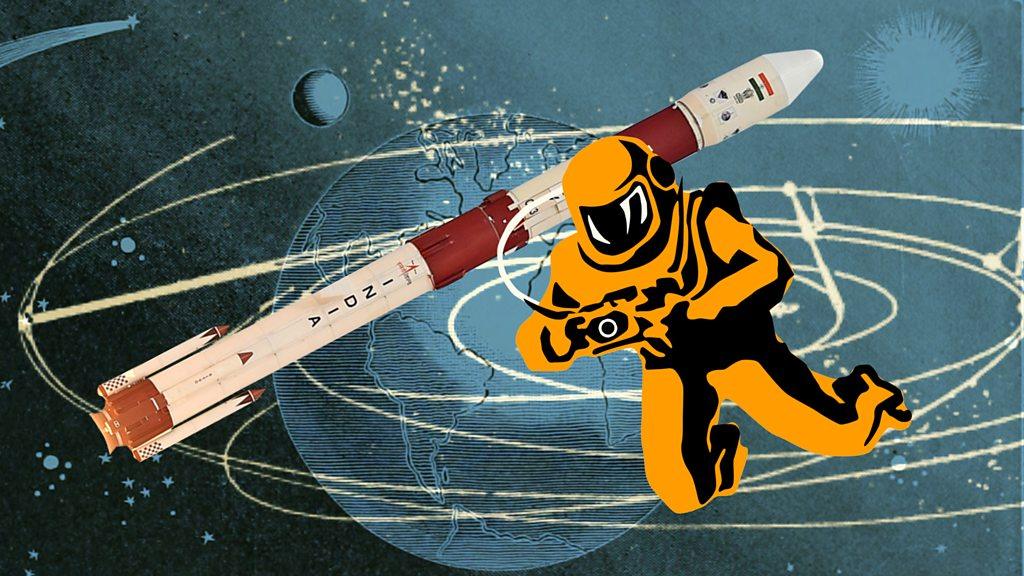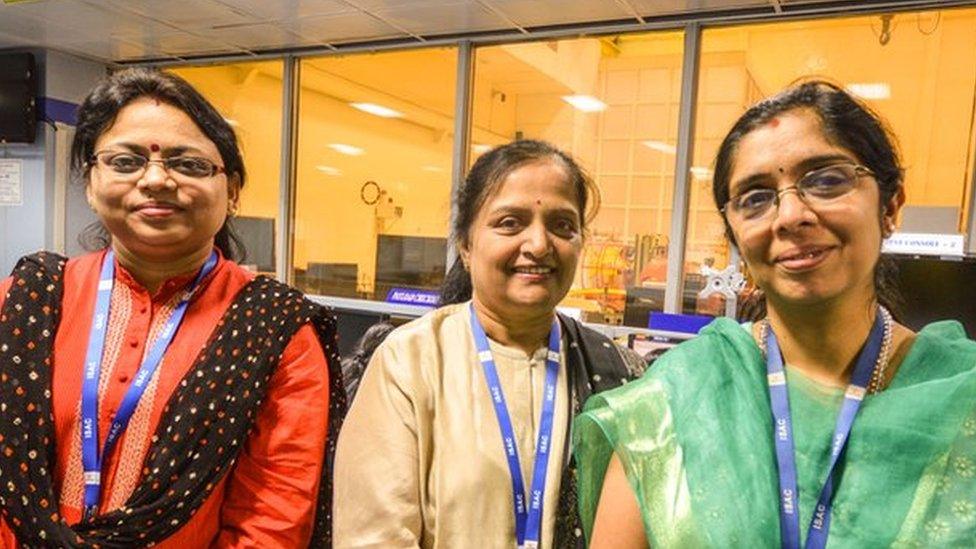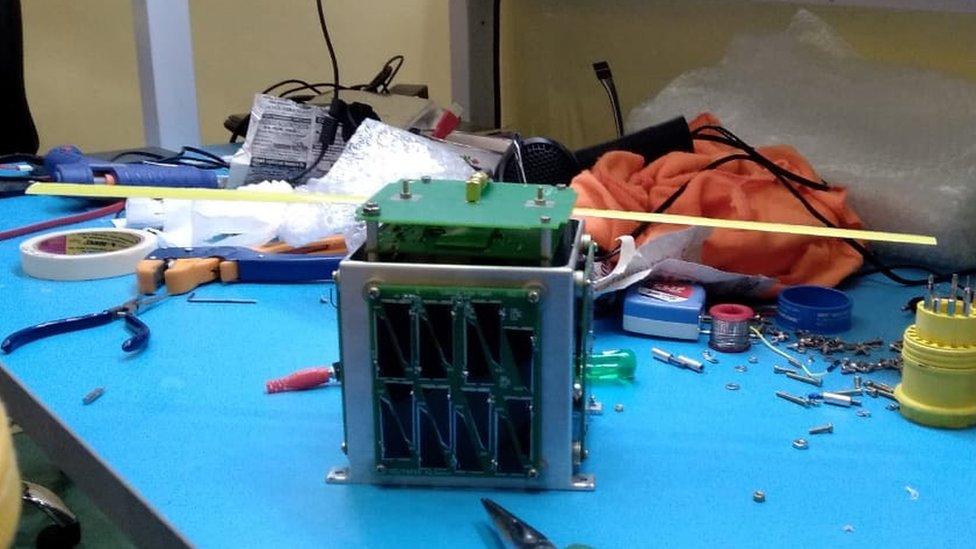Chandrayaan-2: India announces new date for Moon mission
- Published

The rocket weighs as much as a fully-loaded jumbo jet
India has announced a new date to launch its second lunar mission after the scheduled blast-off was halted on Monday due to a technical snag.
Chandrayaan-2 will now be launched at 14:43 local time (09:13 GMT) on 22 July, India's space agency said.
The countdown on Monday was stopped 56 minutes before the launch after a "technical snag was observed in launch vehicle system," it added.
It hopes the $150m mission will be the first to land on the Moon's south pole.
India's first Moon mission - Chandrayaan-1, which launched in 2008 - resulted in the probe crash-landing, external on the lunar surface. But it carried out the first and most detailed search for water on the Moon using radars.
The latest mission will focus on the lunar surface, searching for water and minerals and measuring moonquakes, among other things.
Allow X content?
This article contains content provided by X. We ask for your permission before anything is loaded, as they may be using cookies and other technologies. You may want to read X’s cookie policy, external and privacy policy, external before accepting. To view this content choose ‘accept and continue’.
If successful, India will become the fourth country to make a soft landing on the Moon's surface.
Only the US, China and the former Soviet Union have been able to do so.


The spacecraft used in the mission has three distinct parts: an orbiter, a lander and a rover.
The orbiter, which weighs 2,379kg (5,244lb) and has a mission life of a year, will take images of the lunar surface.
The lander (named Vikram, after the founder of Isro) weighs about half as much, and carries within its belly a 27kg Moon rover with instruments to analyse the lunar soil. In its 14-day life, the rover (called Pragyan - wisdom in Sanskrit) can travel up to a half a kilometre from the lander and will send data and images back to Earth for analysis.
Is India's prime minister right when he calls his country a space superpower?
- Published22 July 2019

- Published12 December 2016

- Published25 January 2019
